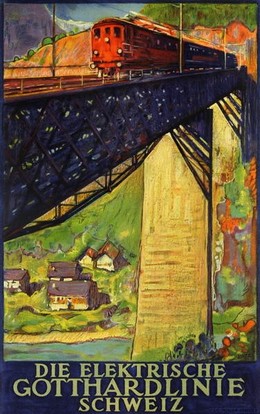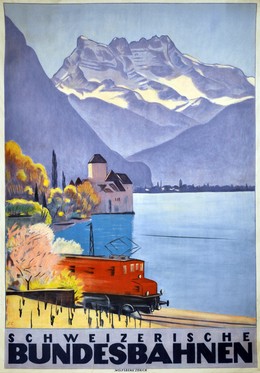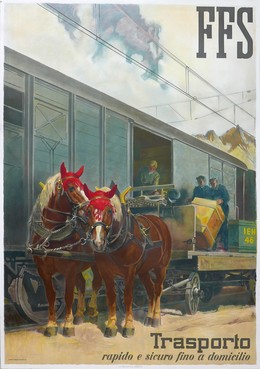SBB - CFF - FFS - Swiss Federal Railways
In 1898, the Swiss people voted to nationalise the private railway companies, which led to the founding of the Swiss Federal Railways (German: Schweizerische Bundesbahnen SBB, French: Chemins de fer Fédéraux Suisses CFF, Italian: Ferrovie federali svizzere FFS). The SBB took over operation of Schweizerische Centralbahn (SCB) and Schweizerische Nordostbahn (NOB) in 1902, which is therefore regarded as the birth year of the SBB. In the early days of the Swiss Federal Railways, steam engines were used. The rail network started to be electrified in 1919 because of the coal shortages during the First World War, and the first electric “Crocodile” trains were used. In 1937, the first fast train with lightweight stock drove from Zurich to Geneva. The delivery of the first type Ae 6/6 locomotive in 1952 marked the beginning of the big series of powerful electric locomotives. In 1955, third-class compartments were discontinued in all of Europe and in 1960, the SBB rail network was almost entirely electrified. In 1961, the first electric four-system SBB trains, the „Trans Europ Express“, were used – a quantum leap in international train travel. The first express trains took up service in 1975 and in the 1980s, the Zurich and Geneva airports were connected to the railway network. In 1982, the cadenced timetable was introduced and the train transport offer was thus extended by 21 percent. In 1990, the city of Zurich and the greater Zurich area received its own train lines (S-Bahn). In 1992, the Swiss voters approved the construction of two transalpine trunk routes with base tunnels under the Gotthard and the Lötschberg. The new Alp transit railway tunnel at the Gotthard is the longest rail tunnel in the world (completion in 2011). Today, the SBB has a 3000-kilometre rail network, carries 450 million passenger journeys and transports 54 million tons of freight per year.



















